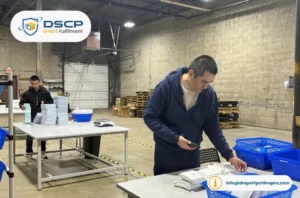The modern e-commerce landscape demands more than basic shipping. Pick and pack services have evolved into sophisticated operations that handle storage, order picking, packing, and shipping coordination for online businesses. These specialized fulfillment providers process millions of orders daily, enabling businesses to scale without investing in warehouses, equipment, or fulfillment staff.
Choosing the right pick and pack provider impacts your costs, delivery speed, and customer satisfaction. With the global e-commerce fulfillment market projected to reach $272.14 billion by 2030, growing at 14.2% annually (Grand View Research, 2024), understanding your options has never been more critical. This guide compares the top seven providers and provides a framework for making informed decisions about your fulfillment strategy.
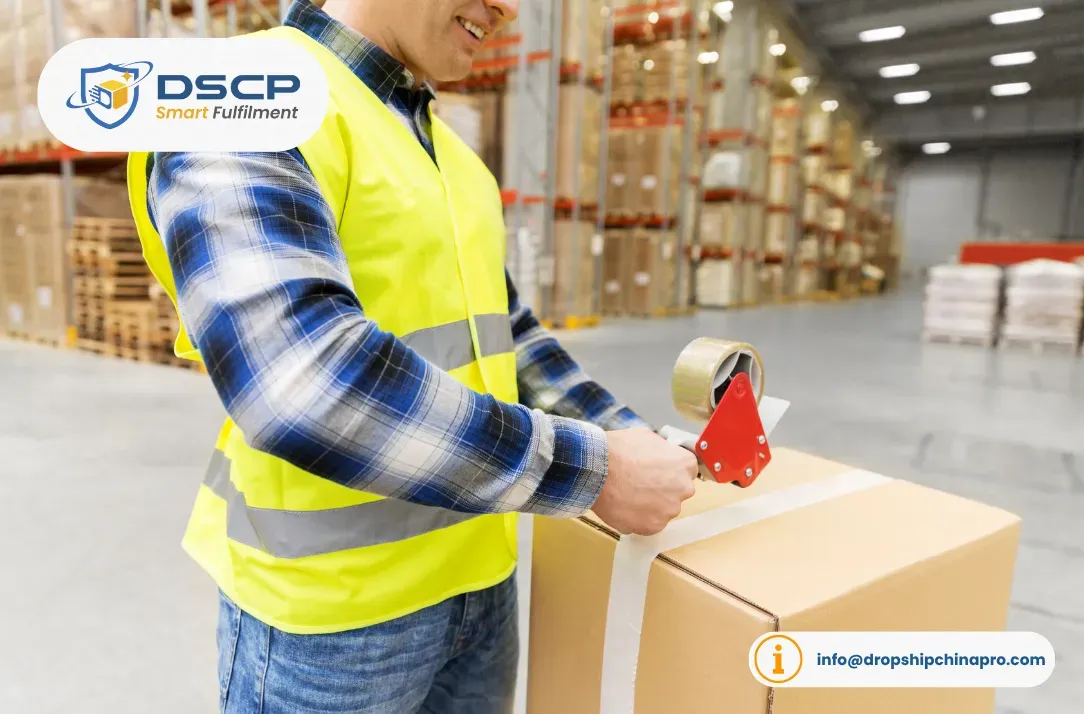
Key Takeaways: Pick and Pack Services
- Market Growth: The e-commerce fulfillment market is expanding at 14.2% annually, reaching $272.14 billion by 2030, driven by rising online sales and delivery speed expectations.
- Cost Efficiency: Most businesses benefit from outsourcing at 200-500+ monthly orders when time savings and professional capabilities outweigh self-fulfillment costs.
- Time Recovery: Professional pick and pack services typically save business owners 20+ hours weekly, enabling focus on marketing and product development.
- Hybrid Models: Combining China sourcing with US fulfillment captures manufacturing cost savings while delivering domestic shipping speeds of 2-4 days.
- Provider Selection: Location strategy, technology integration, pricing transparency, accuracy guarantees, and scalability are the five critical evaluation factors.
- Multi-Channel Benefits: Independent pick and pack providers offer greater flexibility than platform-specific solutions for businesses selling across multiple channels.
- Accuracy Standards: Professional providers maintain order accuracy rates exceeding 99.5% through warehouse management systems and verification protocols.
What Are Pick and Pack Services?
Pick and pack services are third-party fulfillment solutions where providers store your inventory, retrieve items when orders arrive, pack them securely, and coordinate shipping to your customers. These services handle the complete physical fulfillment process that connects online orders to customer delivery.
The process works in three core stages:
- Picking: Retrieving the correct items from warehouse locations based on customer orders. Workers use handheld scanners and warehouse management systems to locate products efficiently and verify selections through barcode scanning.
- Packing: Selecting appropriate boxes or envelopes, adding protective materials like bubble wrap or air pillows, inserting packing slips and branded materials, and applying shipping labels.
- Shipping: Working with carrier partners to schedule pickups, track packages, and manage delivery timelines.
Businesses use these services for several compelling reasons:
- Save 20+ hours weekly on fulfillment tasks
- Scale operations without infrastructure investment
- Access professional expertise and carrier discounts
- Maintain consistent service levels during growth periods or seasonal spikes
For businesses processing 200-500+ orders monthly, outsourcing to professional pick and pack companies often provides better economics and performance than self-managed operations. Understanding how these services work helps you evaluate whether outsourcing makes sense for your business. The right provider essentially becomes an extension of your team, handling logistics while you focus on marketing, product development, and customer relationships.
For a deeper dive into how pick and pack warehouses operate, including the complete fulfillment workflow and technology requirements, explore our comprehensive pick and pack warehouse guide.
Quick Provider Comparison
| Provider | Best For |
|---|---|
| DSCP Smart Fulfillment | China sourcing + US fulfillment (100-2,000 orders/mo) |
| ShipBob | Growing brands with 500-5,000 orders/month |
| Red Stag Fulfillment | Heavy/bulky products over 50 lbs |
| Amazon FBA | Amazon-focused sellers needing Prime |
| ShipMonk | Mid-size businesses (1,000-10,000 orders/mo) |
| ShipNetwork | Multi-channel sellers across platforms |
| Shipfusion | Premium brands with high-value products |
Top 7 Pick and Pack Companies Compared
Selecting the right pick and pack provider requires understanding how different companies serve different business needs. Each provider brings unique strengths in pricing, technology, geographic coverage, and specialization. This comparison helps you identify which provider aligns best with your order volume, product characteristics, and growth trajectory. Before comparing specific providers, understanding the fundamentals of pick and pack warehouses is essential. Read our strategic guide for foundational context.

DSCP Smart Fulfillment
DSCP Smart Fulfillment serves e-commerce businesses sourcing from China, particularly those processing 100-2,000 orders monthly. The company’s hybrid fulfillment model combines affordable product sourcing from verified Chinese suppliers with professional US-based pick and pack services, creating a unique value proposition for businesses that want manufacturing cost savings with domestic delivery speed.
What makes DSCP different:
- End-to-end supply chain control: Factory quality control → ocean/air shipping → US pick and pack on one platform
- Strategic US locations: Warehouses in Pomona, CA and New Brunswick, NJ, provide 2-4 day delivery to most US customers
- Pay-as-you-go pricing: No hidden costs or large upfront commitments
- Proven track record: 1,500+ active stores | 4.9/5 Trustpilot rating | 30,000+ daily parcel capacity
- Comprehensive quality inspection: Built-in QC for international sourcing peace of mind
The strategic advantage lies in eliminating coordination complexity. Instead of working with separate sourcing agents and fulfillment providers, DSCP manages the complete supply chain. This integration is particularly valuable for businesses concerned about product quality when sourcing internationally, as the quality inspection process catches issues before products reach US warehouses.
Best for: Businesses already sourcing products from China or considering international sourcing to improve margins while maintaining competitive delivery speeds in the US market.
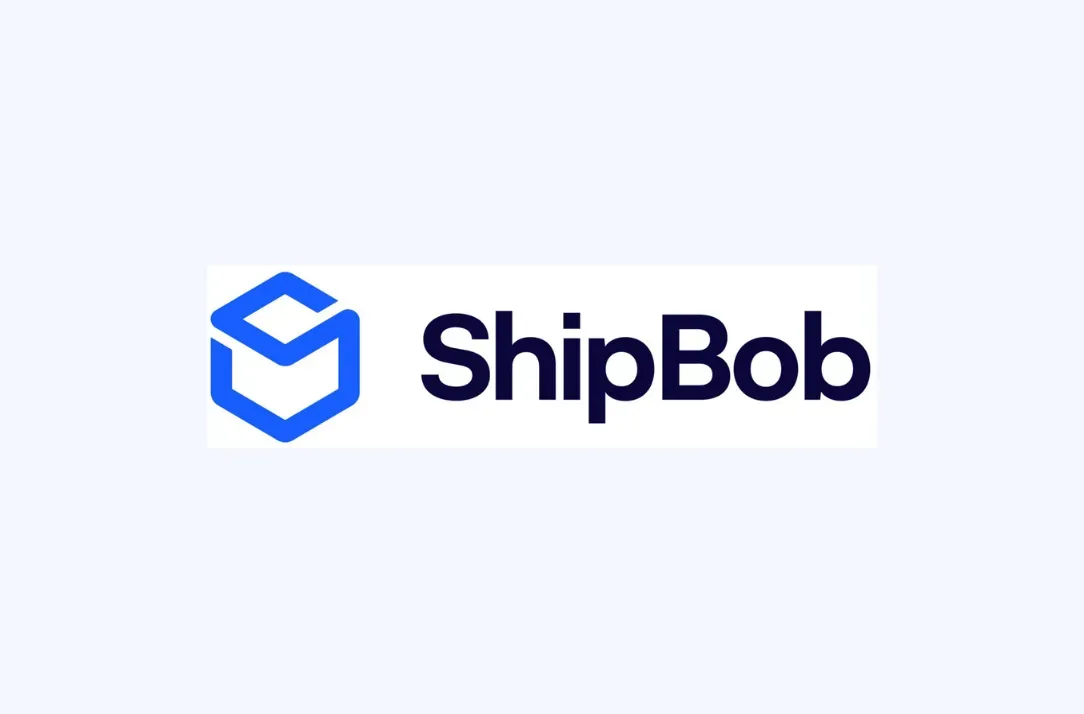
ShipBob
ShipBob targets growing e-commerce brands processing 500-5,000 orders monthly. The company operates over 50 fulfillment centers across the United States, Canada, and Europe, providing extensive geographic coverage that enables fast delivery across multiple markets.
Key capabilities:
- Massive distribution network: 50+ fulfillment centers enable strategic inventory positioning
- 2-day ground shipping: Reaches 95% of US customers without expensive air services
- Strong platform integrations: Direct connections with Shopify, WooCommerce, BigCommerce
- Real-time visibility: Advanced analytics and inventory tracking dashboard
- International expansion: Easy entry into Canadian and European markets
The platform’s technology provides real-time inventory visibility, order tracking, and analytics that help businesses optimize their fulfillment operations. However, mid-tier pricing with monthly minimum requirements makes the service better suited for established brands rather than early-stage startups.
Best for: Established e-commerce brands with consistent volume looking for distributed fulfillment and international expansion capabilities.

Red Stag Fulfillment
Red Stag Fulfillment specializes in heavy, bulky, or high-value products that many traditional fulfillment providers avoid or charge premium rates to handle. The company focuses specifically on items weighing over 50 pounds or requiring special handling due to size, fragility, or value considerations.
Specialized strengths:
- Heavy item expertise: Specialized in products over 50 lbs (furniture, exercise equipment, electronics)
- 100% accuracy guarantee: Industry-leading commitment backed by performance guarantees
- Strategic US locations: Salt Lake City and Knoxville facilities for regional coverage
- Insurance included: Comprehensive coverage for high-value merchandise
- Damage prevention: Expert handling protocols reduce damage rates
This specialization enables Red Stag to provide expertise and infrastructure specifically designed for challenging products. The premium pricing includes comprehensive insurance coverage and handling expertise that protects valuable inventory.
Best for: Businesses selling furniture, exercise equipment, appliances, or other specialty items requiring expert handling (minimum 200 orders/month).

Fulfillment by Amazon (FBA)
Fulfillment by Amazon serves sellers focusing primarily on Amazon’s marketplace. The program provides access to Amazon’s massive fulfillment network, Prime badge eligibility, and the customer trust associated with Amazon delivery standards.
FBA advantages:
- Prime eligibility: Substantial conversion rate boost from Prime badge
- Amazon’s logistics network: World-class fulfillment infrastructure and carrier relationships
- Customer trust: Amazon delivery standards and customer service
- Competitive pricing: Favorable rates at higher volumes
The program offers competitive pricing at higher volumes, with fees structured around product size, weight, and storage duration. Prime eligibility often increases conversion rates substantially, as many Amazon customers filter search results to show only Prime-eligible products.
Limitations to consider:
- Designed primarily for Amazon sales (limited multi-channel capabilities)
- Restrictive policies on storage duration and product categories
- Long-term storage fees penalize slower-moving inventory
- Less flexibility than independent 3PL providers
Best for: Amazon-focused sellers or businesses using a hybrid strategy (FBA for Amazon, independent 3PL for other channels).
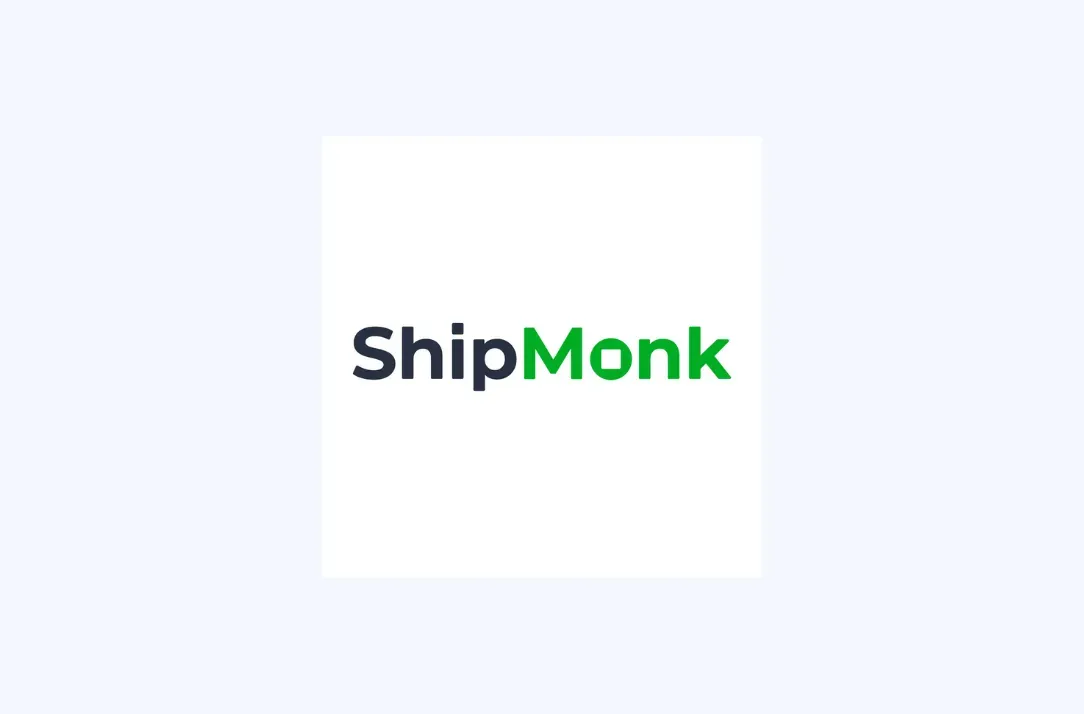
ShipMonk
ShipMonk serves mid-size businesses processing 1,000-10,000 orders monthly. The company emphasizes advanced automation and sophisticated warehouse management systems that provide detailed inventory analytics and reporting capabilities.
Technology-forward approach:
- Advanced WMS: Sophisticated warehouse management with detailed analytics
- Multi-warehouse distribution: Strategic inventory positioning across locations
- Transparent pricing: Clear fee structures with scalable rates
- Strong integrations: Comprehensive platform and order management system connections
- Data-driven insights: Detailed reporting for optimization opportunities
This technology focus helps businesses optimize inventory levels, understand fulfillment costs in detail, and make data-driven decisions about their operations. The platform offers multi-warehouse distribution, allowing businesses to position inventory in multiple locations for faster delivery and reduced shipping costs.
Best for: Mid-size businesses that have moved beyond the startup phase and need sophisticated fulfillment capabilities to support continued growth.
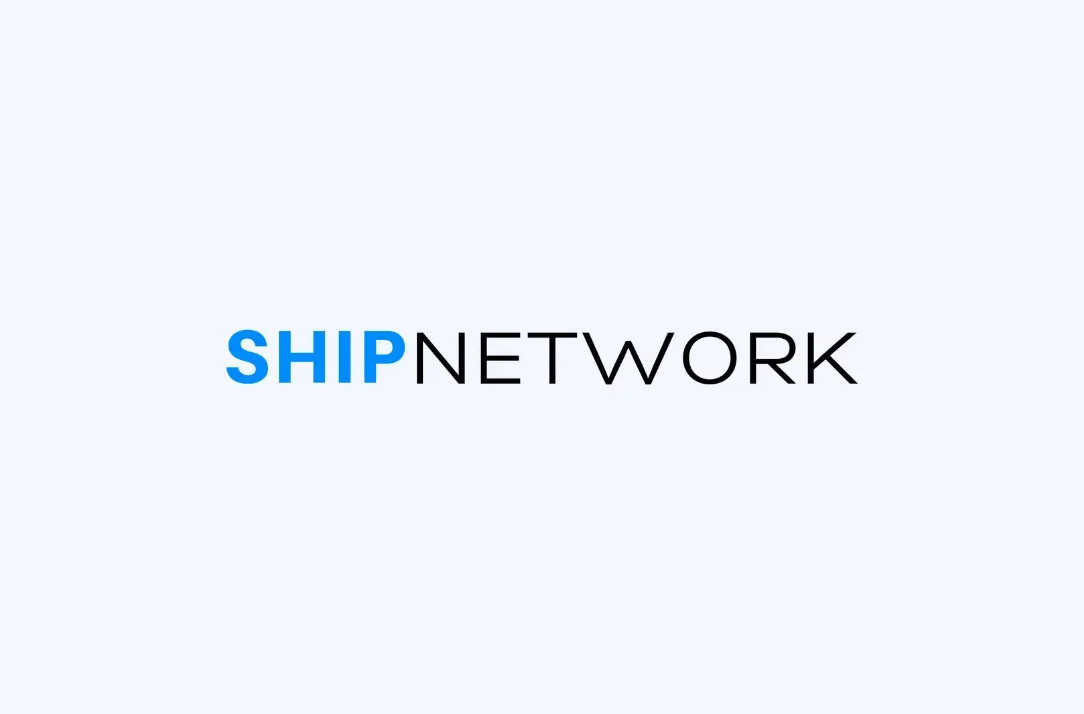
ShipNetwork
ShipNetwork (formerly Rakuten Super Logistics) targets multi-channel sellers who maintain active sales across Amazon, Shopify, eBay, and other platforms simultaneously. The company’s strength lies in platform integration capabilities that enable seamless order processing regardless of where customers purchase.
Multi-channel expertise:
- Platform integration excellence: Seamless order processing across all sales channels
- Same-day fulfillment options: Fast processing for orders received before cutoffs
- Distributed US network: Strategic warehouse locations for regional coverage
- Competitive pricing: Volume discounts that improve unit economics at scale
- Marketplace experience: Specialized knowledge of different platform requirements
The distributed US warehouse network provides same-day fulfillment options for orders received before cutoff times, helping businesses meet customer expectations for fast shipping. ShipNetwork offers competitive pricing with volume discounts that improve unit economics as businesses scale.
Best for: Multi-channel sellers needing strong technical integration across various sales platforms and marketplaces.
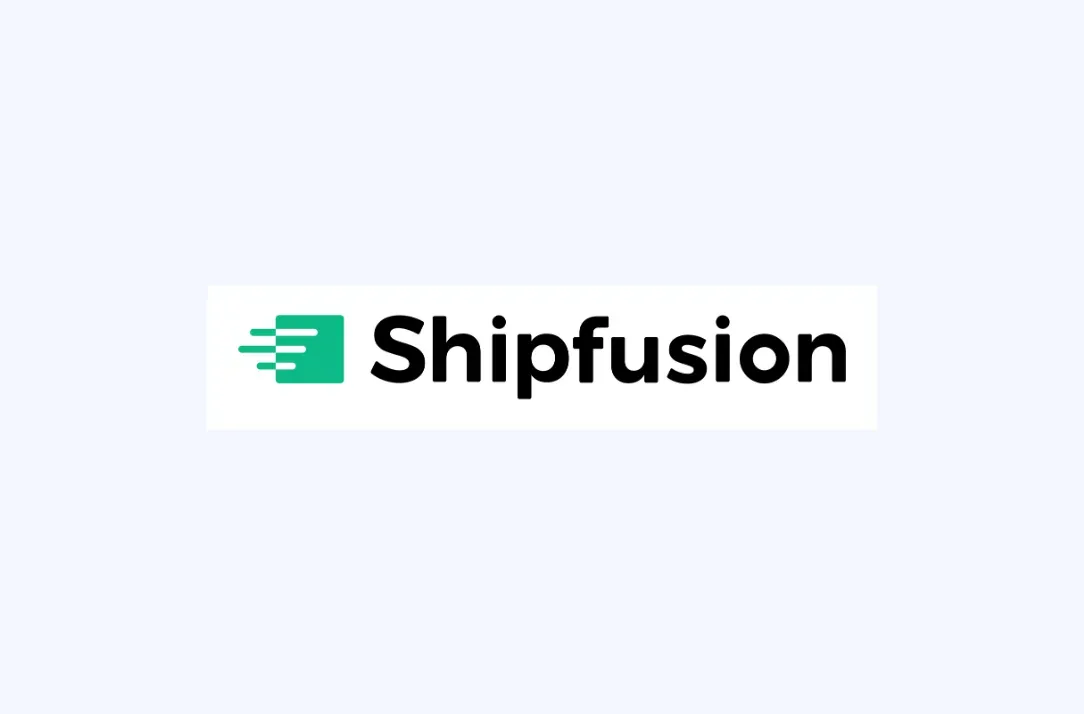
Shipfusion
Shipfusion serves premium brands and businesses selling high-value products where presentation and customer experience justify higher fulfillment costs. The company specializes in white-glove handling and custom packaging that creates memorable unboxing experiences and reinforces brand positioning.
Premium positioning:
- White-glove handling: Meticulous care for high-value products
- Custom packaging excellence: Create memorable unboxing experiences
- Technology platform: Detailed visibility into operations and performance
- DTC brand focus: Specialized expertise in direct-to-consumer fulfillment
- Brand experience: Packaging that reinforces premium positioning
The technology-forward platform provides detailed visibility into fulfillment operations, inventory status, and performance metrics. Shipfusion works particularly well for direct-to-consumer brands where product margins support premium fulfillment services and where packaging contributes significantly to brand perception.
Best for: Premium brands and DTC businesses where fulfillment quality directly impacts customer lifetime value and brand reputation (monthly commitments required).
Typical Pick and Pack Pricing
| Fee Type | Typical Cost Range |
|---|---|
| Pick & Pack (1-2 items) | $3-4 per order |
| Pick & Pack (5+ items) | $6-8 per order |
| Storage (per cubic foot) | $0.50-2.00 per month |
| Receiving (per pallet) | $25-50 |
| Returns Processing | $2-4 per return |
| Monthly Minimum | $300-600 average |
Real-World Example: How Pick and Pack Services Solved a Scaling Challenge
The Business Challenge
Sarah launched her health supplement brand in early 2023, processing orders from her garage while building brand awareness through social media and content marketing. By mid-year, she was handling 350 orders monthly across Shopify and Amazon, spending 25+ hours weekly on fulfillment tasks. Every afternoon involved pulling orders, printing labels, driving to shipping locations, and responding to customer service inquiries about delivery times.
The operational burden created several compounding problems:
- Consistently missed carrier cutoff times for same-day shipping, leading to customer complaints and negative reviews
- No time for marketing activities or product development that could drive growth
- Garage and spare bedroom completely filled with inventory, creating household tension
- Couldn’t handle seasonal volume spikes—January orders tripled to over 1,000 monthly
- Unprofessional packaging compared to competitors, occasionally resulting in damaged deliveries
Sarah recognized that her fulfillment approach had become the primary constraint on business growth, consuming time she needed for revenue-generating activities while creating negative customer experiences.
The Solution
After researching options, Sarah partnered with a pick and pack provider offering:
- Same-day shipping for orders placed before 2 PM
- Scalable capacity to handle volume fluctuations
- Professional packaging with branded inserts and thank-you cards
- Real-time inventory synchronization with both Shopify and Amazon
- Strategically located warehouse providing 2-3 day delivery to 80% of her customer base
The Results
The transformation after six months demonstrated the impact of professional fulfillment:
- Time recovered: 25 hours weekly redirected to marketing campaigns and new product launches
- Delivery speed: Decreased from 4-6 days to 2-3 days average
- Revenue growth: 45% increase without fulfillment bottlenecks
- Customer satisfaction: 82% fewer late delivery complaints, rating improved from 4.2 to 4.7 stars
- Cost efficiency: $2,200 monthly vs. ~$2,800 in self-fulfillment costs (including time value, supplies, gas, and storage)
This example illustrates how pick and pack services transform fulfillment from a time-consuming operational burden into a strategic business advantage. The right provider doesn’t just process orders—they enable business owners to focus on growth activities while professionals handle logistics complexity.

How to Choose the Right Pick and Pack Provider
Selecting the optimal pick and pack provider requires systematic evaluation of how different capabilities align with your specific business requirements. Five critical factors should guide your decision-making process, each addressing different aspects of fulfillment performance and business fit.
1. Location Strategy
Location strategy directly impacts both shipping costs and delivery speed. Providers with warehouses positioned near your customer concentrations reduce the average distance each package travels, cutting transit times while lowering transportation expenses.
Consider these location strategies:
- West Coast customers: California warehouse locations become essential
- East Coast-focused: New Jersey or Pennsylvania facilities are optimal
- National markets: Multi-location providers or central US hub strategies
Ask providers: “Where are your fulfillment centers, and can you show delivery time zone maps?”
2. Technology Integration
Technology integration determines how smoothly orders flow from your sales channels into fulfillment operations. Direct integration with your e-commerce platform eliminates manual order entry and reduces errors.
Essential capabilities include:
- Real-time inventory synchronization that prevents overselling
- Automatic order import that triggers fulfillment immediately
- Tracking number push-back to customers for proactive updates
- API access for custom integration requirements
Ask providers: “What’s your integration process timeline and what technical resources will I need?”
3. Pricing Transparency
Pricing transparency separates professional providers from those who obscure true costs until after commitment. Clear fee structures documented in writing should detail every potential charge.
Red flags to watch for:
- Vague responses like “we’ll quote you after you sign up”
- No itemized pricing breakdowns
- Discussions of fees not mentioned in initial conversations
Ask providers: “Can you provide a complete fee schedule, including all potential charges?”
4. Accuracy and Performance
Accuracy guarantees and performance service level agreements demonstrate provider confidence in their operations. Professional providers track and share their order accuracy rates, which should exceed 99.5% for standard fulfillment.
Request specific metrics:
- Order accuracy rate based on actual error tracking
- Same-day ship rate for orders received before cutoff times
- Average order processing time from receipt to carrier pickup
Ask providers: “What’s your accuracy rate and what happens when mistakes occur?”
5. Scalability
Scalability enables your business to grow without requiring infrastructure changes or provider transitions. Flexible capacity accommodates volume increases during growth periods, seasonal spikes, and unexpected demand surges.
Providers should explain:
- How they handle 2-3x normal volume during peak periods
- Their maximum daily processing capacity
- Their approach to temporary volume spikes from viral products or campaigns
Ask providers: “How do you handle seasonal spikes and what’s your maximum daily capacity?”
Decision Framework
Follow this systematic approach:
- Identify 3-4 providers whose capabilities match your order volume and business model
- Request detailed quotes using identical information to enable accurate comparison
- Ask for references from businesses with similar products and volume levels
- Negotiate trial periods of 1-3 months with limited inventory commitment
- Monitor performance closely during the first 90 days
Order Volume Guide
| Monthly Orders | Best Fulfillment Option |
|---|---|
| 0-200 orders | Self-fulfillment or low-minimum 3PL |
| 200-500 orders | 3PL with flexible pricing |
| 500-2,000 orders | Hybrid or mid-tier 3PL provider |
| 2,000-5,000 orders | Multi-location 3PL network |
| 5,000+ orders | Premium 3PL or self-operated facility |
Pick and Pack Services vs. Other Fulfillment Options
Understanding how pick and pack services compare to alternative fulfillment approaches helps businesses make strategic decisions aligned with their specific situations. Three common alternatives—self-fulfillment, Amazon FBA, and dropshipping—each offer distinct trade-offs in cost structure, operational control, and customer experience.
Pick and Pack Services vs. Self-Fulfillment
Self-fulfillment means handling all aspects of order processing internally, from storing inventory to packing boxes to coordinating carrier pickups. This approach provides complete control over quality standards, packaging presentation, and daily operations.
Advantages of self-fulfillment:
- Complete control over quality and packaging
- Direct oversight of daily operations
- No third-party coordination required
Challenges of self-fulfillment:
- Fixed costs (facility rent, equipment, staff) continue regardless of volume
- Time-intensive management requirements
- Difficult to scale during growth or seasonal spikes
- Capacity issues during slow periods (paying for unused space)
Breakeven point: Most businesses find that self-fulfillment works adequately up to 200-500 orders monthly. Beyond this range, outsourcing typically becomes more cost-effective.
Pick and Pack Services vs. Amazon FBA
Amazon FBA provides access to Amazon’s massive logistics network, Prime badge eligibility, and customer trust associated with Amazon delivery. For sellers where Amazon represents the primary sales channel, FBA offers undeniable advantages.
Advantages of Amazon FBA:
- Prime eligibility increases conversion rates substantially
- Access to Amazon’s logistics expertise
- Customer trust in Amazon’s delivery standards
Limitations of Amazon FBA:
- Designed primarily for Amazon sales with limited multi-channel capabilities
- Restrictive policies on storage duration, product categories, and labeling
- The fee structure heavily penalizes long-term storage
- Less flexibility than independent 3PL providers
Best approach: Many successful businesses use a hybrid strategy—FBA for Amazon sales, independent pick and pack services for orders from Shopify, their own website, and other marketplaces.
Pick and Pack Services vs. Dropshipping
Dropshipping eliminates inventory investment entirely. Suppliers ship products directly to customers after receiving orders, with businesses never handling physical products.
Advantages of dropshipping:
- Minimal financial risk and upfront investment
- Ability to test products without inventory commitment
- No warehouse or fulfillment management
Trade-offs of dropshipping:
- Shipping times typically 7-14+ days from international suppliers
- Minimal quality control (you never see products before customers)
- Lower margins (suppliers capture fulfillment value)
- Difficult brand building without control over packaging
Hybrid solution: Some providers offer models that combine international sourcing advantages with domestic fulfillment speed. These approaches capture product cost benefits of manufacturing regions like China while maintaining inventory in US warehouses for rapid 2-4 day delivery.
According to Wikipedia, order fulfillment encompasses the complete process from receiving customer orders through delivery and returns management (Wikipedia, 2024). Understanding these alternatives helps businesses select approaches aligned with their strategic priorities, whether emphasizing control, cost minimization, speed, or operational simplicity.
For a detailed analysis of the economics and trade-offs between managing fulfillment internally versus outsourcing, read our complete self-fulfillment vs 3PL comparison guide.
Fulfillment Model Comparison
| Fulfillment Model | Key Advantage |
|---|---|
| Pick & Pack Services | Scalable, professional, multi-channel flexibility |
| Self-Fulfillment | Complete control over operations and quality |
| Amazon FBA | Prime eligibility and Amazon visibility boost |
| Dropshipping | No inventory investment or fulfillment management |
| Hybrid Model | China sourcing costs + US delivery speed |
Getting Started: 3-Step Action Plan
Transitioning to professional pick and pack services requires systematic planning to ensure smooth implementation and optimal results. This three-step framework helps businesses move from evaluation through provider selection to operational optimization.
Step 1: Calculate Your Needs
Document your specific fulfillment requirements with enough detail to enable accurate provider comparison:
- Order volume: Current monthly orders and growth projections for next 6-12 months
- Order complexity: Average items per order (impacts pick and pack labor costs)
- Product specifications: Typical dimensions, weights, and any fragility concerns
- Special requirements: Temperature control, custom packaging, assembly, or kitting services
- Budget parameters: Current self-fulfillment costs and available budget for outsourced services
This preparation enables you to provide consistent information to all providers during the quote process, ensuring you receive comparable proposals. Many businesses underestimate their true self-fulfillment costs by failing to account for facility overhead, equipment depreciation, and the opportunity cost of time spent on operations rather than revenue-generating activities.
Step 2: Request Quotes and Compare
Contact 3-4 providers from the comparison section whose capabilities align with your order volume and business model:
- Provide identical information to each provider for accurate comparison
- Ask specifically about onboarding timelines (typically 2-4 weeks)
- Request references from businesses with similar products and volume
- Inquire about trial periods or limited initial commitments
Reference conversations often reveal operational realities that don’t emerge during sales processes. Ask reference customers about communication quality, how the provider handles problems, whether unexpected fees emerged after signing, and whether they would choose the same provider again.
Step 3: Test and Optimize
Start with a limited commitment to evaluate performance before full transition:
- Begin with a small inventory batch rather than a complete stock transfer
- Monitor critical metrics: accuracy rates, processing speed, communication quality
- Track total fulfillment costs compared to your previous method
- Adjust inventory positioning based on actual sales data after several months
Many businesses discover optimization opportunities after experiencing real operations. You might find that certain product combinations create inefficient packaging, that splitting inventory between two locations would reduce shipping costs, or that your packaging specifications are more expensive than necessary. Professional providers typically welcome these optimization conversations, as improved efficiency benefits both parties.

FAQs About Pick and Pack Services
What is a pick and pack service?
A pick and pack service is a third-party fulfillment solution where providers store your inventory, retrieve items when orders arrive, package them securely, and coordinate shipping to customers. This handles the complete physical fulfillment process, enabling business owners to focus on marketing and growth instead of operational logistics.
What does a pick and packer do?
A pick and packer fulfills orders by locating products using scanners, verifying items through barcode scanning, packing with protective materials, and preparing packages for shipment. Professional pick and packers process 50-150 orders daily while maintaining 99.5%+ accuracy rates.
What is the pick and pack charge?
Pick and pack charges range from $3-8 per order, depending on complexity. Simple orders with 1-2 items cost $3-4, while multi-item or custom packaging orders cost $6-8. This fee is separate from storage, receiving, shipping, and returns processing costs.
Can you pay people to pack for you?
Yes, pick and pack services employ trained staff to pack your orders. You pay a per-order fee, and their employees handle box selection, protective materials, packing slips, and shipping labels. This is typically more cost-effective than hiring your own staff.
Is a packing service worth it?
Packing services become worthwhile at 200-500+ monthly orders. Benefits include 20+ hours saved weekly, professional packaging, same-day shipping, seasonal scalability, and carrier discounts of 15-30%. Costs are typically offset by time savings and improved customer satisfaction.
What is a pick and pack fee?
A pick and pack fee is the labor charge for fulfilling one order—picking items and packing them for shipment. Fees range from $3-8 per order, separate from storage, shipping, and receiving charges. Volume discounts often apply at higher order quantities.
What are the main duties of a picker packer?
Picker packers receive instructions from warehouse systems, navigate to storage locations, scan barcodes to verify products, select packaging materials, add protective cushioning, insert documentation, seal packages, apply shipping labels, and stage orders for carrier pickup.
What does a packing service include?
Packing services include selecting appropriately-sized boxes, adding protective materials (bubble wrap, air pillows), inserting packing slips and return labels, including branded materials when specified, sealing packages securely, applying carrier labels, and staging for pickup.
What will packers not pack?
Services typically exclude hazardous materials (flammables, explosives), perishable foods requiring refrigeration, items needing FDA/DEA licensing, extremely high-value items without special insurance, recalled products, and items without proper barcodes. Restrictions vary by provider.
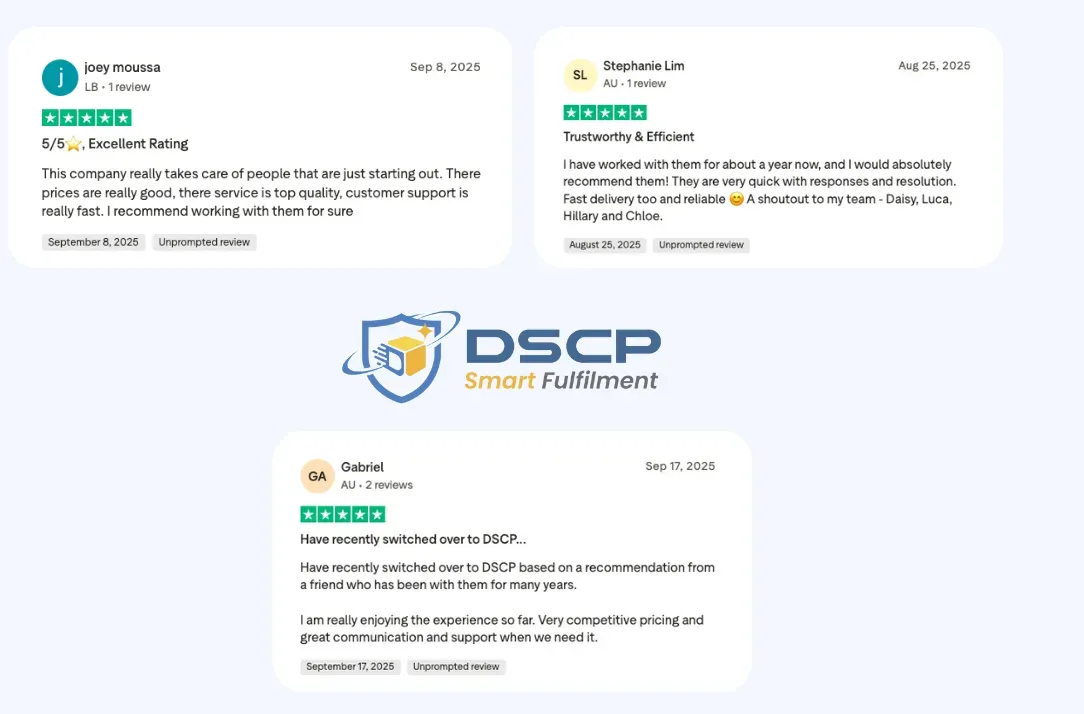
What E-commerce Businesses Say About Professional Pick and Pack Services
Real experiences from businesses using professional fulfillment demonstrate the tangible impact of strategic pick and pack partnerships.
Stephanie Lim from Australia shares her experience working with DSCP Smart Fulfillment: “I have worked with them for about a year now, and I would absolutely recommend them! They are very quick with responses and resolution. Fast delivery too and reliable. A shoutout to my team – Daisy, Luca, Hillary, and Chloe.”
Joey Moussa from Lebanon emphasizes the value for growing businesses: “This company really takes care of people who are just starting. Their prices are really good, their service is top quality, and their customer support is really fast. I recommend working with them for sure.”
Gabriel from Australia describes his transition to professional fulfillment: “I have recently switched over to DSCP based on a recommendation from a friend who has been with them for many years. I am really enjoying the experience so far. Very competitive pricing and great communication and support when we need it.”
These testimonials highlight the fundamental qualities that distinguish exceptional pick and pack providers: responsive communication that prevents small issues from becoming major problems, competitive pricing that makes professional fulfillment accessible to growing businesses, and reliable service that enables consistent customer satisfaction. When businesses find fulfillment partners who prioritize relationship building over transactions and provide proactive support, they establish operational foundations that support sustainable growth.
Ready to Optimize Your E-commerce Fulfillment?
Choosing the right pick and pack service transforms fulfillment from an operational burden into a competitive advantage. Whether you’re processing 100 orders monthly or scaling to thousands, the right fulfillment partner enables you to focus on growth while professionals handle logistics.
Take the next step:
- Explore hybrid fulfillment: Learn how DSCP Smart Fulfillment combines China sourcing with US warehousing for optimal cost and speed
- Get a quote: Discuss your specific fulfillment needs with our team and receive a customized proposal
- Compare your options: Use our self-fulfillment vs 3PL guide to evaluate whether outsourcing makes sense for your business stage
With strategic US warehouse locations in California and New Jersey, pay-as-you-go pricing, and a proven track record supporting 1,500+ active stores, DSCP helps businesses scale without the complexity of managing international sourcing and domestic fulfillment separately.
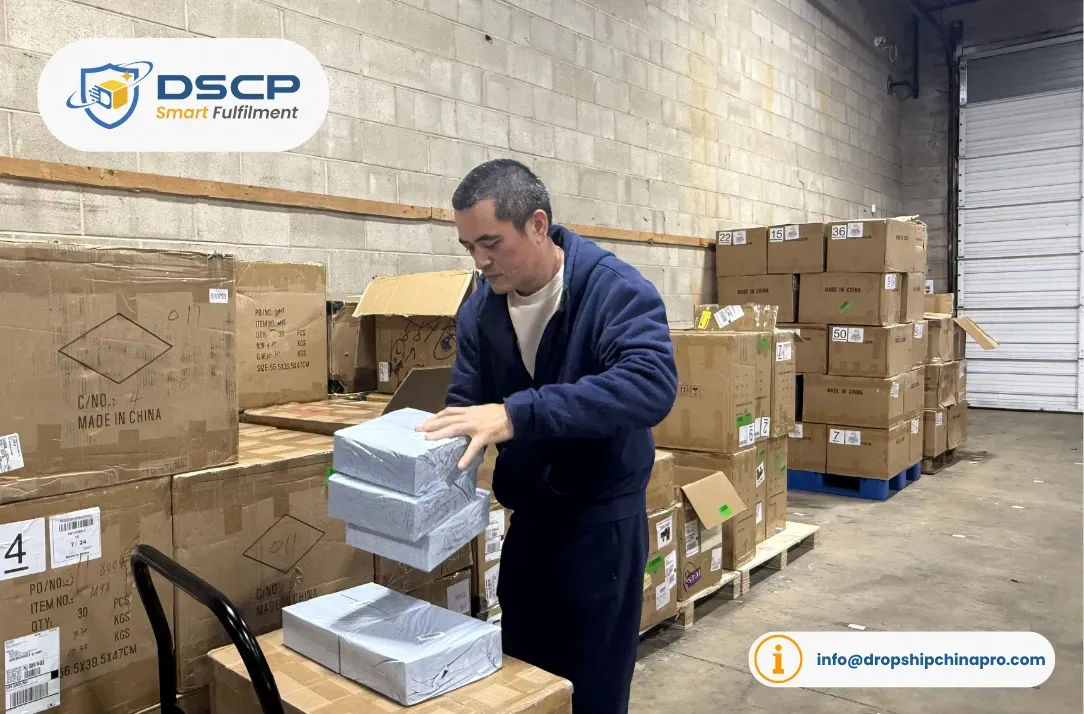
Conclusion
Pick and pack services handle the operational complexity that connects online orders to customer delivery, enabling e-commerce businesses to scale without investing in warehouse facilities, fulfillment equipment, or specialized staff. The right provider depends on your specific situation, including order volume, product characteristics, customer geography, and growth trajectory. Most businesses benefit from outsourcing at 200-500+ monthly orders when time savings and professional capabilities outweigh the costs of managing fulfillment internally.
Don’t choose based on price alone—consider total value, including delivery speed that affects customer satisfaction, accuracy rates that prevent costly errors and returns, scalability that enables growth without operational disruptions, and time recovery that allows you to focus on revenue-generating activities rather than operational tasks. Request quotes from 3-4 providers matching your needs, compare offerings transparently using consistent evaluation criteria, and test performance during trial periods before full commitment. Strategic fulfillment partnerships transform logistics from an operational bottleneck into a competitive advantage that enables sustainable growth while consistently delivering positive customer experiences.
References
- Grand View Research. (2024). E-commerce Fulfillment Service Market Size & Analysis Report, 2024-2030. Retrieved from grandviewresearch.com
- Shopify. (2024). E-commerce Fulfillment Costs Analysis. Retrieved from shopify.com/fulfillment-costs
- Wikipedia. (2024). Order fulfillment. Retrieved from wikipedia.org//Order_fulfillment

Hi, I’m Yavuz. I help e-commerce businesses grow through strategic content and SEO. Here, I share insights on fulfillment solutions, 3PL partnerships, and digital marketing strategies based on real data and industry trends.


